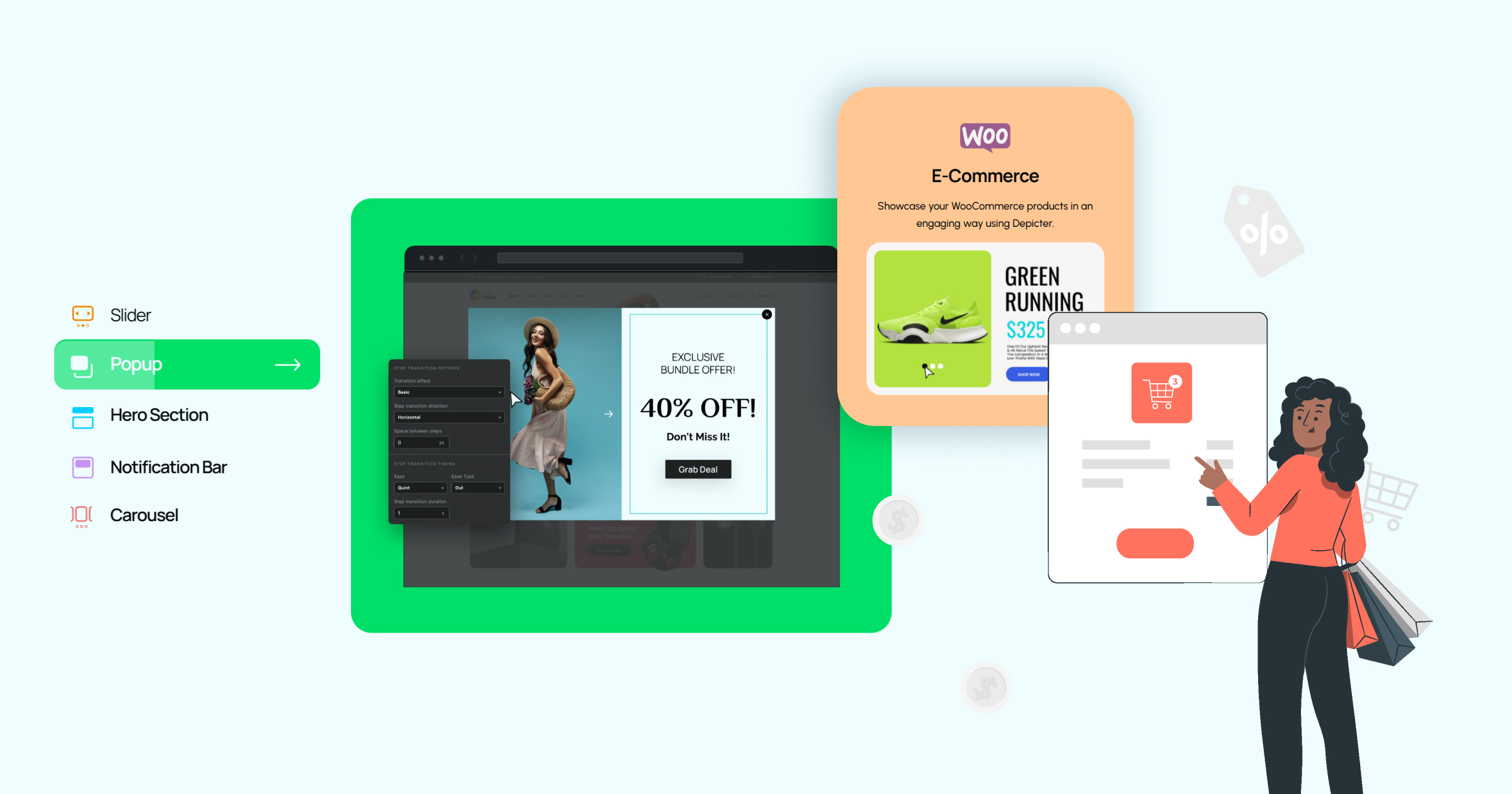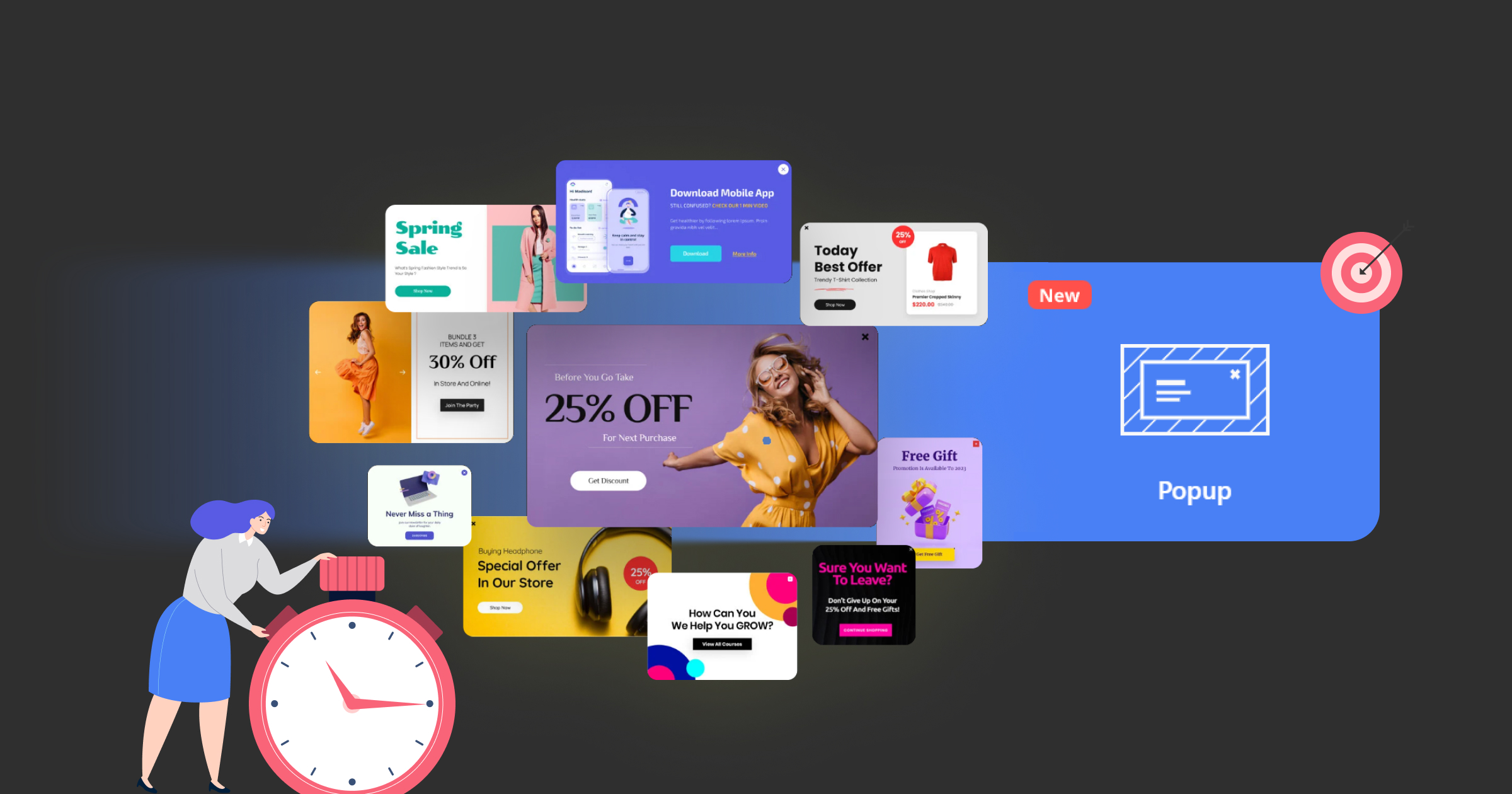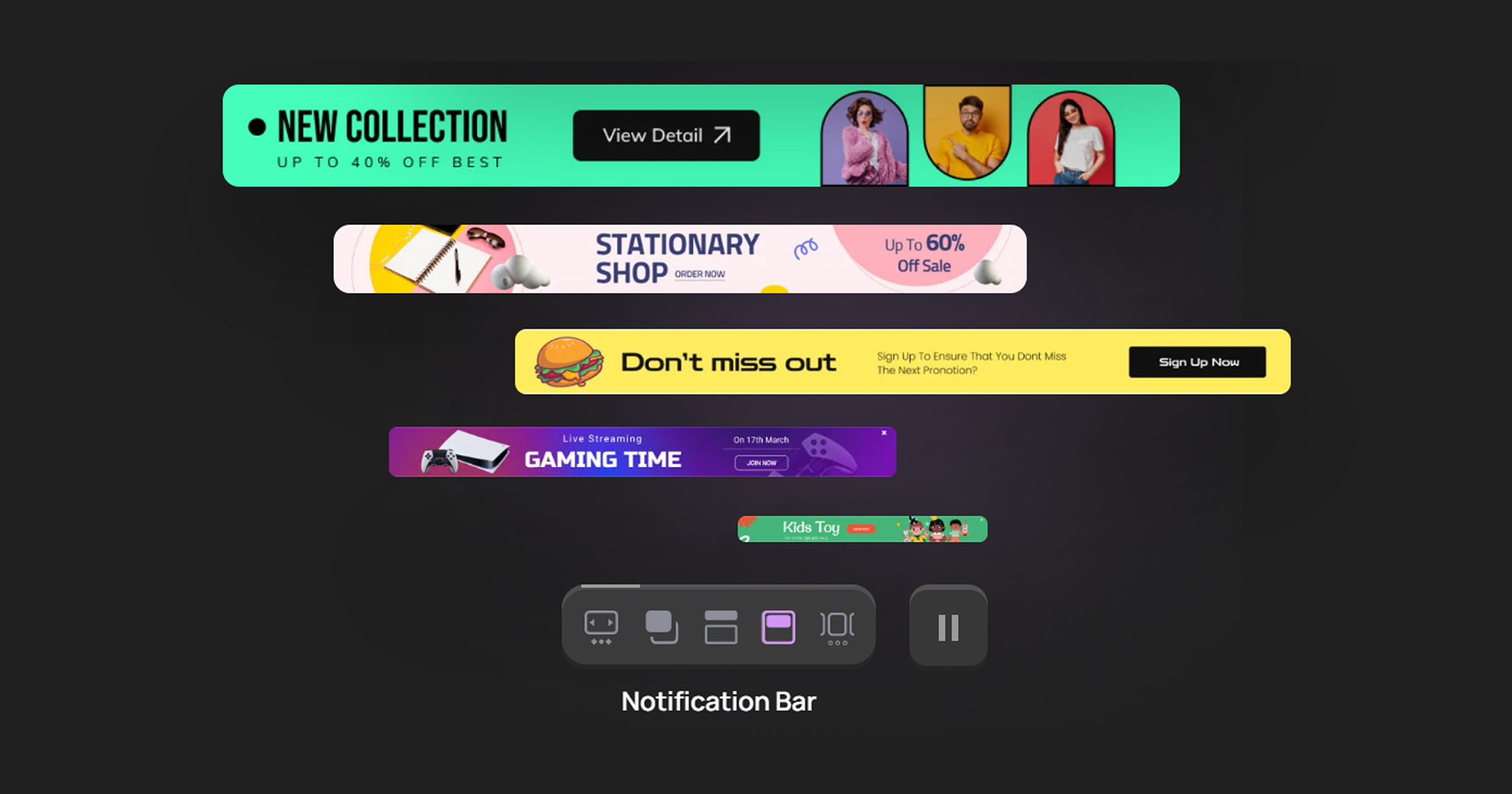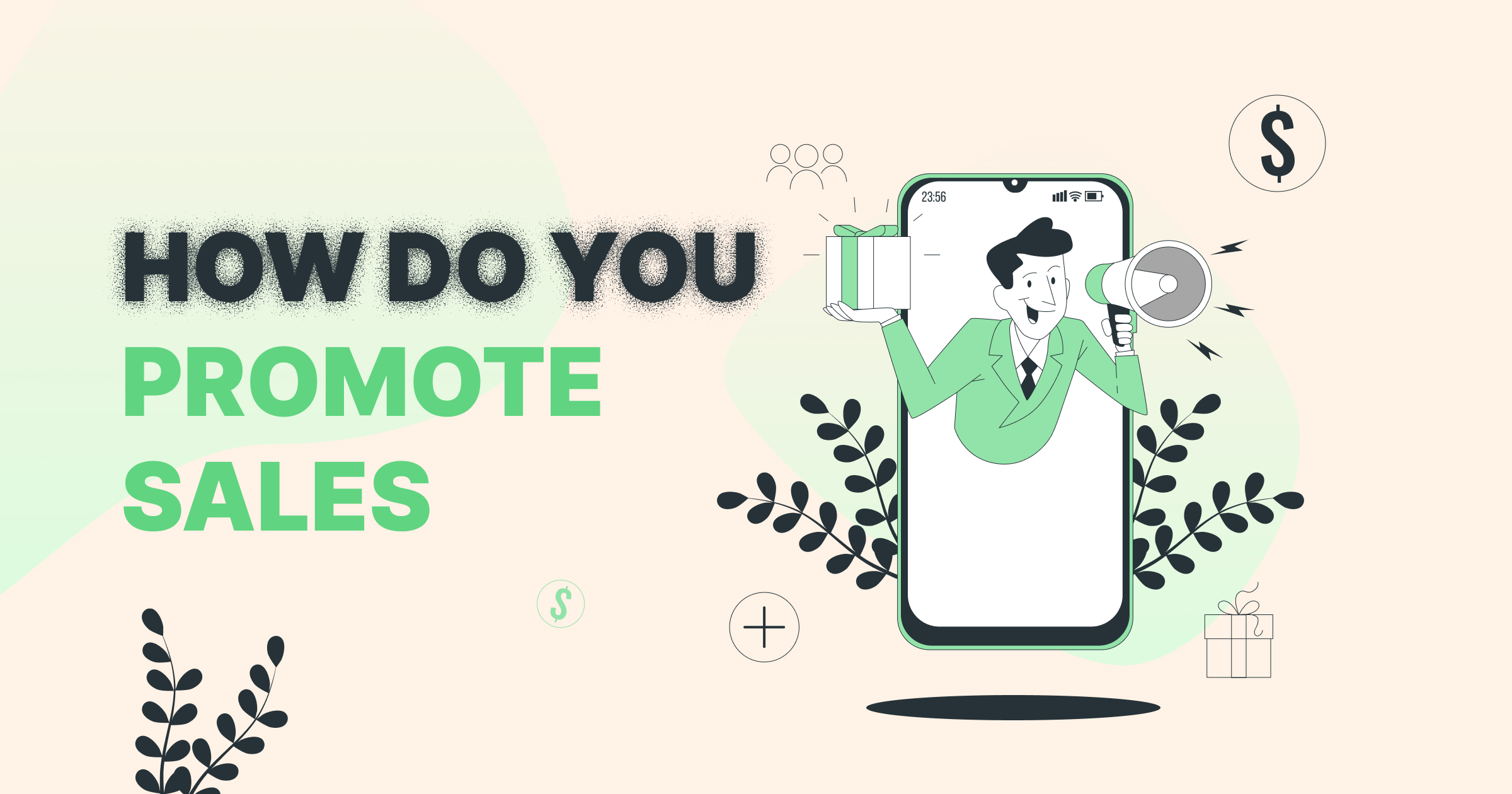Key Takeaways
- Understand what sales campaigns are and how they help achieve specific business goals.
- Learn how to set measurable objectives and align your strategy with your audience’s needs.
- Follow a structured approach to launching campaigns with compelling content and timing.
- Discover proven promotional tactics like flash sales, referrals, and loyalty programs.
- Get practical guidance on using Depicter to build effective popups and notification bars.
Capturing your audience’s attention and converting interest into action is more important than ever. That’s where sales campaigns come in. Whether you’re launching a new product, clearing out seasonal stock, or simply trying to drive more traffic to your website, a well-planned campaign can make all the difference.
But creating a campaign is just the beginning. The real challenge lies in promotion. How do you promote sales in a way that actually drives results? That’s where strategy comes in, and tools like popups and notification bars can be powerful ways to boost visibility and conversions.

In this guide, you’ll learn what makes a successful sales campaign, how to plan one strategically, and how to amplify your results using Depicter.
1. What Is a Sales Campaign?
A sales campaign or sales promotion is a short-term, focused effort that businesses use to boost interest in their products or services and drive more sales within a specific period. It’s a step-by-step plan that helps reach the right people, often through methods like emails, calls, ads, or social media, and encourages them to take action.
Whether the goal is to launch a new product, clear out extra inventory, or hit sales targets before a deadline, these campaigns are designed to make an impact quickly.
A good sales campaign not only brings in new customers but also keeps existing ones engaged.
It’s more than just pushing a product—it’s about offering something that feels timely, useful, and even exciting for buyers, while giving the sales team clear goals and tools to succeed.
For example, an online clothing store might run a “Summer Flash Sale” where everything is 30% off for 48 hours to clear out seasonal stock. They promote it through email and social media, driving urgency with a countdown timer.
Another case could be a tech store launching a “Back to School” campaign, offering student discounts on laptops and free shipping for a limited time. These kinds of campaigns use specific timing, clear offers, and targeted communication to increase engagement and sales quickly.
2. Planning for a Successful Campaign
Launching a sales or promotional campaign that truly delivers results takes more than just a good idea — it requires thoughtful planning, a clear direction, and a deep understanding of your audience. Below is a step-by-step guide to help you organize a campaign that not only catches attention but also drives meaningful results.
Set Specific and Measurable Goals
Start by defining what you want to achieve. Are you looking to clear out seasonal inventory, increase revenue during a slow period, bring in new customers, or simply get your brand more exposure? Avoid broad goals like “increase sales.” Instead, choose measurable targets such as “increase website purchases by 20% over the next three weeks.” These clear benchmarks help you and your team stay focused and assess how well the campaign is working.
Know Your Audience Inside Out
Understanding who you’re targeting is just as important as what you’re offering. Start by creating detailed customer profiles based on real data, such as age, interests, buying habits, and location. Segmenting your audience allows you to customize your offers. For example, young parents might respond well to baby product bundles, while frequent online shoppers might be more interested in free shipping. Use tools like surveys, purchase history, and social media analytics to gather insights that shape your approach.
Choose the Right Promotional Strategy
The method you choose to deliver your offer can greatly affect your campaign’s impact. There are three common strategies:
- Push Strategy: Offer incentives to retailers or distributors to stock your product — ideal for B2B and retail-focused campaigns.
- Pull Strategy: Focus on end customers by creating demand directly through promotions like flash sales or giveaways.
- Hybrid Strategy: Combine both push and pull methods — for instance, give your distributors a bonus while also offering a buy-one-get-one deal to consumers.
Match your strategy to your product’s lifecycle. New products often benefit from pull tactics like samples or influencer promotion, while well-established ones may perform better with a push approach.
Develop a Detailed Campaign Plan
A structured plan ensures smooth execution. Lay out your campaign elements in advance, including:
- Timeline: Set start and end dates to build urgency. Short durations (like 48-72 hours) can motivate quicker responses.
- Budget: Decide how much to invest in areas such as ads, discounts, influencer fees, or giveaways.
- Channels: Choose where to promote — email, social media, website banners, or even physical displays — based on where your audience is most active.
A well-timed offer aligned with holidays or shopping seasons can also increase relevance and boost performance.
Craft a Compelling Launch
How you present your offer can make or break the campaign. Pay attention to:
- Messaging: Use clear, catchy headlines and action-driven phrases like “Ends Soon” or “Grab Yours Now.”
- Visuals: Eye-catching graphics and clean design help your message stand out on crowded platforms.
- Multi-Channel Distribution: Don’t rely on just one outlet. Combine social media posts, email blasts, website banners, SMS alerts, and influencer collaborations to maximize visibility.
It’s also smart to test variations of your content, such as different images or headlines, to see what performs best before scaling it across all platforms.
A successful campaign doesn’t happen by chance. It’s the result of clear goals, audience awareness, a solid strategy, and strong execution.
When all these pieces work together, you’re more likely to see results that matter — whether it’s more sales, new customers, or stronger brand presence.
3. Proven Campaign Promotion Strategies
Running effective promotions helps online stores attract new customers, increase sales, and build brand loyalty. While there are many ways to do this, here are five of the most popular strategies:
1. Buy One, Get One Free (BOGO)
Why it works: Shoppers love getting something for free—it feels like a reward. BOGO promotions also help move excess stock quickly.
Example:
Kraft Heinz used BOGO offers to increase sales of slower-moving products. This helped clear out their inventory while giving customers extra value for their money.
2. Flash Sales
Why it works: These limited-time offers create urgency. People don’t want to miss out, so they’re more likely to buy right away.
Example:
Amazon Prime Day is a huge flash sale event. For a limited time, customers get deep discounts on popular products, resulting in a massive spike in purchases and engagement.
3. Email Marketing
Why it works: Email lets you talk directly to your customers. You can send targeted messages, offer discounts, and follow up on abandoned carts.
Example:
Grammarly’s Black Friday campaign offered a “55% Off” deal exclusively through email. The urgency and savings pushed many free users to upgrade to paid plans.
4. Referral Programs
Why it works: People trust recommendations from friends. Offering a reward for sharing your brand encourages loyal customers to spread the word.
Example:
Many brands use the classic “Give $5, Get $5” offer. It motivates customers to invite others while earning a bonus themselves, growing the customer base through word of mouth.
5. Loyalty Programs
Why it works: Customers who get rewarded are more likely to come back. Points, discounts, and special perks help build long-term relationships.
Example:
LEGO’s Insiders program gives points for every purchase. Customers can use points for rewards, access members-only content, and feel like part of a special club.
While these five strategies are widely used and highly effective, there are many others worth exploring, like giveaways, cashback deals, product bundles, free trials, and even charitable donations linked to purchases.
4. Use Popups and Notification Bars to Maximize Reach
Popups: Timed and Targeted Engagement

Popups are effective for delivering timely messages, such as special offers or email sign-up prompts. To ensure they enhance rather than hinder user experience, consider the following best practices:
- Timing Is Crucial: Deploy popups based on user behavior. For instance, use exit-intent popups to retain visitors about to leave, or display them after a certain time on the page to engage interested users.
- Clear and Concise Messaging: Keep the content straightforward, highlighting the value proposition and including a compelling call-to-action (CTA).
- Design for Clarity: Ensure the popup is visually appealing but not overwhelming. Use contrasting colors for visibility and make it easy to close to respect user autonomy.
Notification Bars: Subtle Yet Effective

Notification bars, also known as sticky bars or announcement bars, sit at the top or bottom of a webpage and provide persistent, unobtrusive messaging. They are ideal for:
User Experience Stack Exchange
- Announcing Promotions: Highlight ongoing sales, discounts, or special offers. For example, a bar stating Offering free shipping on orders over $50 can encourage customers to spend more to qualify for the deal.
- Sharing Important Updates: Inform visitors about new product launches, upcoming events, or changes in service.
- Encouraging Sign-Ups: Prompt users to subscribe to newsletters or join loyalty programs with concise messages and clear CTAs.
Design Tips:
- Keep It Simple: Use brief, impactful text to convey your message without clutter.
- Use Contrasting Colors: Ensure the bar stands out against your site’s background to grab attention.
- Strategic Placement: Place the bar in a spot that’s easy to see, usually at the top of the page, without covering up any important content.
5. How to Create Campaign Popups with Depicter

Depicter is a visual Popup builder and Notification Bar builder for WordPress that provides many features as part of marketing or promotional campaigns. It offers a user-friendly interface with a range of pre-designed templates, allowing users to quickly implement customized messages without writing code. Depicter’s tools include flexible display rules, responsive design options, and behavior-based triggers, making it suitable for creating targeted interactions such as limited-time offers, email capture forms, and general site announcements.
We will be creating a simple popup-based sales campaign designed to quickly boost sales through a pull strategy and a flash sale. The goal is to create urgency and excitement by offering a limited-time discount to all website visitors. The popup will appear based on user behavior to avoid interrupting the browsing experience and will include a countdown to drive fast action.
[The website full image]Campaign Details
Campaign Goal:
Increase purchases by 25% within 48 hours by promoting summer clothing through a time-sensitive offer.
Strategy:
- Pull Strategy: Reaching out directly to customers visiting your website
- Flash Sale: Creating urgency with a two-day discount event
Target Audience:
All visitors to the website, with no special segmentation for this general campaign
Depicter Popup Content
Headline:
Summer Sale
Body Text:
25% Off
Get your Discount with our coupon code
Countdown Timer
Call to Action Button:
Achieve code
Popup Settings:
Trigger Timing:
- Show popup after 10 seconds on the homepage
- Or on scroll (30% down the page)
Frequency Control:
- Show once per session to avoid annoying users
Design Notes:
- Colors: Use brand-aligned and eye-catching colors that draw attention without overwhelming the user.
- Appropriate Images: Include visuals that reflect the user’s interests to increase relevance and engagement.
- Responsive Design: Ensure the popup adjusts smoothly across all devices and screen sizes.
- Close Button: Always provide a clear and accessible close button so users can easily dismiss the popup.
Install Depicter
Before getting started, make sure the Depicter plugin is installed on your site.
You can quickly find it by searching for “Depicter” in the Plugins section of your WordPress dashboard.
Need help? Check out our step-by-step guide with a video tutorial here.
Importing a Template
After going to the Depicter dashboard, click on the Popup section.
There are two ways to create our desired popup:
One is to start from scratch with a blank popup and build everything manually, or we can use one of the ready-made templates provided by Depicter.
Depicter offers a large and diverse collection of popup templates, covering everything from newsletter signups and promotions to exit-intent messages and seasonal offers.
Having access to such a wide variety is a huge advantage for any popup builder — it saves you a significant amount of time, ensures professional design quality, and helps you get started quickly without the need to build layouts from scratch.
Even better, every template is fully customizable, so you can easily apply your own design, branding, and content to make it truly your own.

You can browse these templates, use the targeted categories on the left side, or filter the popup list using the search bar at the top with relevant keywords.

After selecting the desired popup, simply click the Import button. Within a few seconds, the template will be imported and you’ll be taken to the Depicter editor.

It’s worth noting that our popup has two steps. You can switch between them by clicking on the Steps Panel.
Visitors can click the CTA button on the first step to be directed to the second step, where the campaign’s discount code is displayed.

Customizing the Popup
Here, using the tools and features provided by Depicter, you can customize every aspect of the popup — from how it looks to how it functions.
For example, we’ve added a Countdown Timer element to the popup here.

When it comes to responsive design, although all of Depicter’s ready-made templates are fully responsive by default, you still have access to all the tools and options needed to fine-tune the popup’s appearance for standard responsive sizes.

The next step is configuring how the popup is displayed. This section includes all the settings that determine
under what conditions the popup will appear to make sure that it displays at the right time and in the right place. After clicking the Publish button, go to the Display Rules section and click on Configure.

Configuring the Display Rules
Based on what we decided in the details of our campaign, the popup should appear after the user has scrolled down 30% of the page. To do this, go to the Triggers section, activate the “Scroll percentage” option, and set the value to 30 seconds.

Also, for the popup to reappear, it should only show up again if the visitor returns to the site, and not more than once during the same session. To set this up, go to the After Close section and select the “Show again after return” option.

Everything is done, and the result will be that when a user scrolls through 30% of the webpage, our popup will appear.

According to our design, when the user clicks the specified CTA button, the discount code will be

6. Adding Notification Bars with Depicter
When deciding between popups and notification bars, it’s important to consider the nature of your message and how intrusive it should be.
Notification bars are ideal for subtle, ongoing promotions or general announcements, like highlighting free shipping thresholds, new product launches, or seasonal hours.
They sit quietly at the top or bottom of your page, making them perfect for keeping users informed without disrupting their experience.
On the other hand, popups are more attention-grabbing and should be used when you need to drive action, like collecting emails, promoting a limited-time offer, or re-engaging users about to leave the site.
In short, use notification bars when you want to inform, and popups when you want to convert.
We’re not going to go over all the campaign scenario details here—instead, we’ll just walk through how to create a notification bar.
Here is a video that shows the whole process of creating a Notification Bar with Depicter:
In the Depicter dashboard, click on the Notification Bar option.

From the available templates, choose one and click Import to start the import process.

After a few seconds, it’s done and you’ll be taken into the Depicter dashboard, where you can make any changes you want before finalizing your notification bar.

To configure how it’s displayed—similar to what we did for the popup—go to the Display Rules section.

This time, for the notification bar, we’ll set it to appear a few seconds after the visitor lands on the page by enabling the Spend time on page option and setting it to 10 seconds.

Finally, once a visitor has spent 10 seconds on our site, the notification bar will appear like this.

Conclusion
A sales promotion is an essential tool for any business looking to drive results in a competitive market. But without the right promotional tactics, even the best campaign ideas can go unnoticed. By combining smart planning with high-converting tools like popups and notification bars, you can maximize reach, create urgency, and guide visitors toward taking action.
Depicter makes it easy to launch visually appealing, behavior-based popups and subtle yet effective notification bars—no coding required. Whether you’re running a flash sale, collecting emails, or announcing new products, using these tools strategically can dramatically increase your chances of campaign success.
Remember: Good timing, targeted messaging, and clear design are the keys to getting the results you want.
Let me know in the comments if this article helped you start a campaign.
FAQs
1. What’s the difference between a sales campaign and a regular promotion?
A sales campaign is typically a more structured and time-bound initiative with a clear goal, such as increasing revenue or clearing out inventory. A promotion is one part of a campaign—like offering a discount, running a giveaway, or launching a flash sale.
2. When should I use a popup instead of a notification bar?
Use popups when you want to grab immediate attention or drive a specific action, like collecting email sign-ups or promoting limited-time deals. Notification bars are best for subtle messaging that doesn’t interrupt the user experience, like announcing free shipping or a product launch.
3. How often should I show a popup to users?
To avoid annoying users, limit the frequency. Best practice is to show a popup once per session or only when specific behavior triggers it (e.g., after scrolling or before exit). Depicter allows you to control this easily with built-in display rules.
4. Can I customize popup templates in Depicter?
Yes! All templates in Depicter are fully customizable. You can change the colors, text, layout, and even add features like countdown timers or multi-step flows to match your brand and campaign goals.
5. Do popups and notification bars work on mobile devices?
Absolutely. Depicter templates are responsive by default, and you can fine-tune their appearance on different screen sizes to ensure a seamless mobile experience.
6. What makes a popup effective?
An effective popup is:
- Timed well (not shown too early)
- Visually appealing
- Clear in its message
- Action-oriented (strong CTA)
- Easy to dismiss
When done right, it adds value without disrupting the user’s journey.













Leave Comment